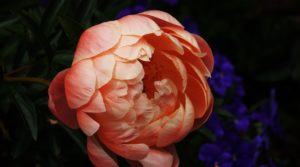Having a well-tended garden blooming with a profusion of colorful flowers, shrubs, and herbs is no mean feat. It involves hard work, due diligence, and serious commitment to regularly taking care of your plants. That’s why it hurts so much to wake up one morning and discover a herd of hungry deer has had a veritable feast in your backyard garden, leaving bare stalks or roots in their wake. So, if you know that you live in an area that is home to these nimble herbivores, then it’s best you protect yourself against a deer invasion by growing deer-resistant plants in your garden.
RELATED POST: Drought Resistant Plants

Rosemary
Deer are quite specific about their diet. They rarely would touch anything with hairy or prickly leaves, and plants having a pleasing or aromatic fragrance are definitely not on their list of top ten food choices. Rosemary, with its aromatic scent, falls into the latter category. Asides its deer-resistant ability, rosemary is a great addition to any garden; its colorful flowers (either white, blue, purple, or pink) brighten up your backyard, it is drought tolerant, and its aroma and taste are unmatched when used for seasoning foods.
Lily of the valley
This shade-loving perennial plant smells nice which of course means it’s off-putting to deer. Surprisingly, its fragrance is not the only reason why it’s on this list; deer don’t eat it because it is also highly poisonous. Every single part of the lily-of-the-valley plant is toxic to pets, wildlife, and little children. Not even its pretty white bell-shaped flowers and eye-catching orange-red berries are fit for consumption.

Peony
Thanks to their big, beautiful, layered flowers, peonies are an absolute visual delight in gardens. Even more wonderful is the fact that deer rarely eat them. Peonies smell great (a complete turn-off to a rampaging herd) and last I heard, a vast majority of the deer population claimed not to like the taste of its flowers and leaves.

Boxwood
The boxwood shrub has several different species, the two most popular ones being the English boxwood and common boxwood. Regardless of the species, this ornamental shrub gives off a very strong scent which repulses deer as well as some humans. People often use boxwood in hedges and borders, and you can prune the shrub to create any desired shape. So, plant some boxwood at the boundary of your backyard garden and those deer would think twice before braving the odds. sometimes you can use the recurve bow to hunt hungry deer.

Daffodils
Daffodils are known for the trumpet-like shape of their flowers. These flowers come in a variety of attractive colors depending on the type of daffodil planted. Some daffodil species are fragrant and some are not, but all daffodil plants are poisonous when ingested by humans and yes, deer. A word of caution here: ensure you handle your daffodils with care as the sap from the plant can cause skin irritation.
Agave
A drought-tolerant plant famed for its use in making tequila, the agave plant comes in very handy when protecting your backyard garden from a deer invasion. Spines around the leaves’ edges combined with the poisonous sap contained within these leaves serve as a double deterrent to hungry deer.
Lamb’s ears
This perennial plant features soft, gently curved leaves. Sounds tasty for a deer, except every single inch of said leaves is covered with white, short, fuzzy hairs. I would never eat anything with a hint of hair, no matter how delicious. The deer populace also subscribes to this ideology.
Dusty Miller
Dusty Miller is another ‘hairy’ plant on our list and one rarely eaten by roaming herds of deer. Its silvery-white foliage creates a unique effect that distinguishes it from the usual greenery in your garden. Its leaves and stems are covered with white, long, and usually thick hairs. Ugh! No deer wants to eat this…

In all honesty, there are dozens of deer-resistant plants out there, and this list just covers a minute portion. Asides rosemary, herbs (such as basil, thyme, oregano, sage, and lavender) with their aromatic scents as well as vegetables with strong odors (such as onions and garlic) would help in keeping out deer. Garden verbena and zinnia have a pleasant fragrance that prevents them from being chomped on. Hens and chicks, globe thistles, and other prickly plants work wonders as well. If you can handle poisonous plants, then bleeding hearts, all types of poppies, spurges, and Lenten roses are great choices.
Now, while having a list of deer-resistant plants is great and helpful, bear in mind that the deer do not have a copy of this list. So, they could eat your prized ‘deer-resistant’ peonies. Yup, a starving deer would eat anything even the poisonous plants that would make him sick.
It’s also important to note that deer preferences could differ based on region and the deer species in your area. White-tailed deer do not have the same diet as a herd of mule deer, and what is deer-resistant in Oregon may not apply to California or in the Eastern US. So, it’s best to do your research and ask other gardeners in your community to know which of these plants are actually deer-resistant in your area.


Comments are closed.